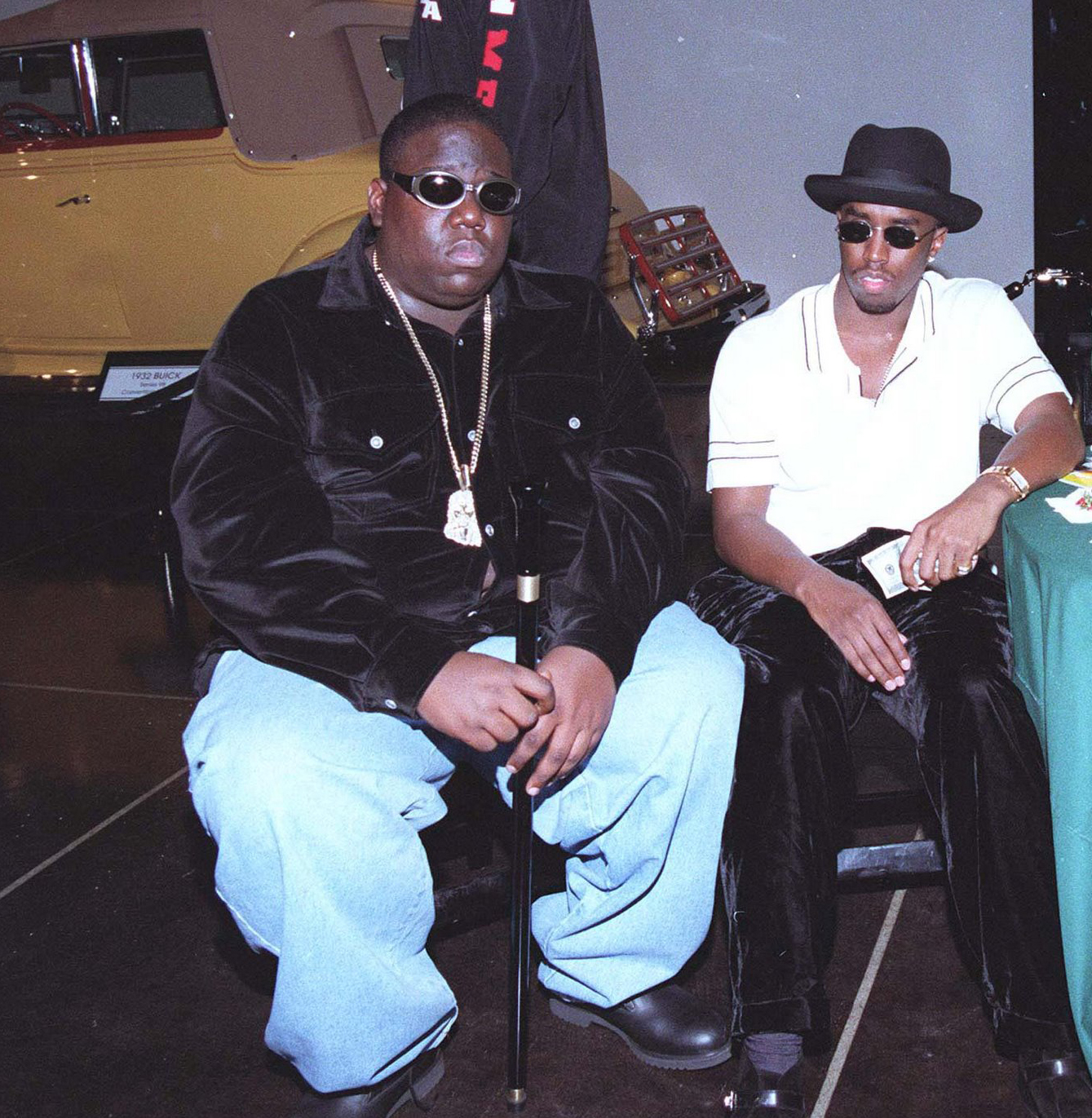16-09-2021
Biggie Smalls Death Photo
Biggie Smalls Death Photos Biography
Sean 'Diddy' Combs Posts Tribute to Friend Biggie Smalls on 20th Anniversary of Rapper's Death Music // March 09, 2017 Faith Evans Announces New Album with Unreleased Notorious B.I.G.
Source:- Google.com.pk- 2 thoughts on “ Biggie Smalls Death Photo, Autopsy Report and Live Footage of the shooting and murder of Biggie ” Silas on May 31, 2017 at 2:24 pm said: According to the report, the bullet perforated Wallace’s colon, liver, heart and the upper lobe of his left lung.
- Biggie Smalls Death Photos Biography Source:- Google.com.pk Born as Christopher Wallace on May 21, 1972, in Brooklyn, New York, Biggie Smalls, also known as Notorious B.I.G., became a drug dealer at a young age. He started experimenting with music as a teenager and, not long after, befriended Sean 'Puffy' Combs.
Born as Christopher Wallace on May 21, 1972, in Brooklyn, New York, Biggie Smalls, also known as Notorious B.I.G., became a drug dealer at a young age. He started experimenting with music as a teenager and, not long after, befriended Sean 'Puffy' Combs. His 1994 debut album, Ready to Die, was a smash hit, and his long-running feud with fellow rapper, Tupac Shakur,helped to shape his career. Biggie was killed in Los Angeles on March 9, 1997.
Early Years
American hip-hop star Biggie Smalls was born as Christopher George Latore Wallace on May 21, 1972 in Brooklyn, New York, in the neighborhood of Bedford-Stuyvesant. Biggie, or 'The Notorious B.I.G,' as he'd later become known, experienced a rough childhood—at an early age, he was surrounded by drug addicts and dealers. As a result, by his early teens, Biggie had joined the life that was all around him. 'Hustlers were my heroes,' he once said. 'Everything happened on the strip I grew up in. It didn't matter where you went, it was all in your face.'
At the age of 17, Biggie was arrested for selling crack, and spent nine months in a North Carolina prison before making bail. As he navigated his young, uncertain life, Biggie started making music. He hooked on with a crew called the 'Old Gold Brothers,' and began experimenting on his own.
Commercial Success
Biggie Smalls Death Photo
Around his neighborhood, Biggie Smalls, as he called himself then, began building a reputation as a musician. After a tape of his landed in the hands of Mister Cee, a well-known DJ, Smalls was featured in the hip-hop publication, The Source.
The article was enough to catch the attention of Sean 'Puffy' Combs, a young producer at Uptown Entertainment, a New York-based label specializing in hip-hop and rhythm and blues. When Combs split off from Uptown to start his own label, Bad Boy Entertainment, he brought Smalls with him.
Troubled Times
However, success and wealth hardly brought peace to Biggie's life.In the immediate aftermath of Ready to Die's popularity, the rapper found himself in constant fear. In 1994, he told The New York Times that he was disliked for having more money, which came with his fame. The large rapper—at 6 feet and three inches, and tipping the scales at nearly 400 pounds—said that he jumped whenever the door to his apartment building opened, fearing that someone might want to hurt him.
Murder and Speculation
Who Killed Biggie Smalls
Shakur's death amplified Biggie's fears about his own life, and his concern was tragically validated on March 9, 1997. Biggie, who had just come out of the Soul Train Music Awards, was sitting in an SUV when another vehicle pulled up to his car, opened fire and killed him. Biggie was only 24 years old at the time.For many fans, the murder was viewed as retaliation for Shakur's murder. Biggie's death shook the music world, prompting fears that the hip-hop world might erupt into a full-fledged war, ending numerous other lives. That didn't happen, fortunately, but Biggie's friends, family and fans never received any answers regarding his death. Despite years of speculation regarding the identity of the gunman, Biggie's case was never solved. Biggie's family has been outspoken about its disappointment with the handling of the case, going as far as accusing the Los Angeles Police Department of employing rogue officers who were involved in the murder.
In 2002, filmmaker Nick Broomfield released the documentary Biggie and Tupac, which featured a round of interviews with people associated with both men. More recently, in May 2012, former L.A. police detective Greg Kading, who had worked on Biggie's case, told VH1 that he had incriminating evidence against Wardell 'Poochie' Fouse, a gang member belonging to the Mob Piru Bloods.
Legacy
Biggie's death came just as the rapper was about to put out his second album, Life After Death. In the wake of Biggie's killing, the record was a giant hit, selling nearly 700,000 copies in its first week. Two years later, Born Again, an album of unreleased material from Biggie, was released. A third album of extra material, Duets: The Final Chapter, was released in 2005.
Biggie Smalls Death Photos
Biggie Smalls Death Photos
Biggie Smalls Death Photos

Biggie Smalls Death Photos
Biggie Smalls Death Photos
